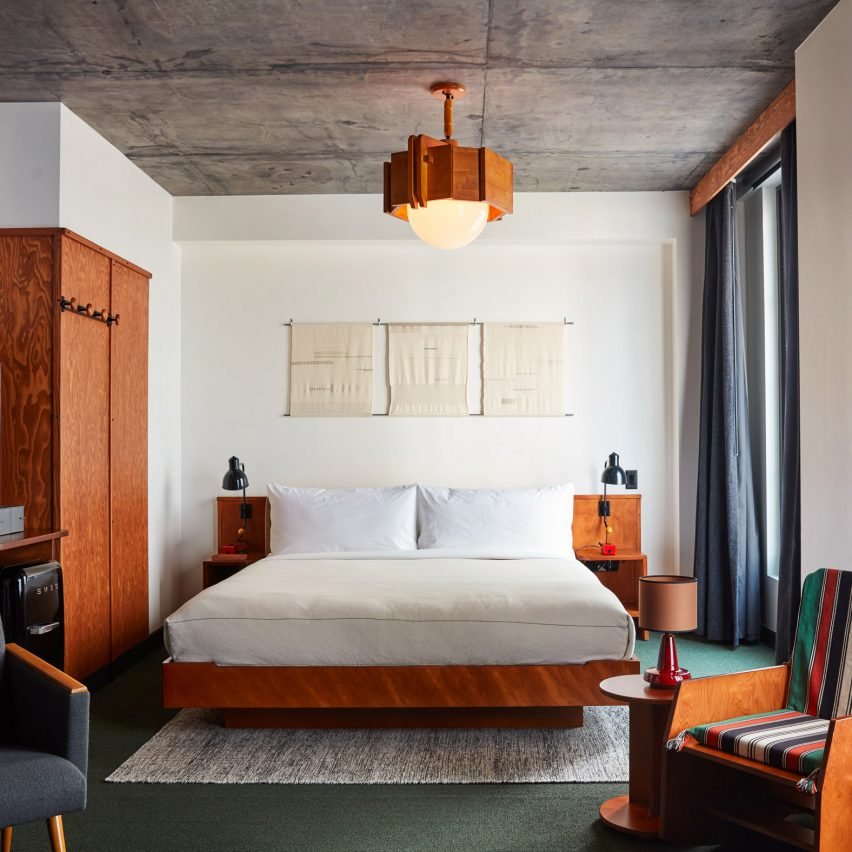4 Perceived Barriers to Sustainable Construction
Introduction
Globally, sustainability is becoming a pressuring issue to countless organisations with consumers defiantly refusing to passively await action from companies but, conversely, impelling them to do their bit to assist the environment. In other words, a wider segment of corporates spanning an assortment of industries, are demonstrating a growing interest in sustainable construction methods, due not only to the emergence of sterner regulations from government bodies but also from an increasingly environmentally aware society.
Faced with these challenges, construction companies must advocate their importance in climate change while they address government regulations and alleviate the burdens of limited resources and consumer demand.
But buried amid this is a fundamental question, what is considered sustainable? Research shows that a miscellany of definitions has been provided to encapsulate the breadth of sustainability. However, most people approve of the simplest and most comprehensive definition set by the 1987 U.N. World Commission on Environment and Development (WCED), commonly known as the Brundtland Report; here, sustainable development is defined as activities that:
“meet present needs without compromising the ability of future generations to meet their needs.”
UNESCO

Sustainability in the Construction Industry
Sustainable construction is aimed to lessen the overall environmental impact of its operations; it should not end at the completion of the project. With this, the property should eventually have reduced environmental impact throughout the course of its life. This means that the design of the building should include components that have a long-term beneficial influence on the environmental impact.
A major issue in the building sector is the possible environmental effects attached to a worker’s pursuits, which must be thought through considerably early in the design phase since the subject is quite broad and extensive.
Importance of Sustainable Construction
The construction sector has a large effect on the environment in terms of energy consumption and emissions.
Construction is one of the least sustainable activities currently underway on planet Earth. It has a major effect on the environment, from energy use to emissions and waste. Oftentimes, equipment depends on fossil fuels, as well as manufacturing materials and transportation, to produce greenhouse gases.
As mentioned by the UK Designing Buildings Wiki:
45% of total UK carbon emissions (27% from domestic buildings and 18% from non-domestic) come from built construction.
72% of domestic emissions arise from space heating and the provision of hot water.
32% of landfill waste comes from the construction and demolition of buildings.
13% of products delivered to construction sites are sent directly to landfill without being used.
Design Buildings Wiki
A decision to construct a new building means an irreversible commitment to using resources. Constant consumption is hard to reduce since designers and contractors cannot alter the commitment.

Carbon Emissions
In addition to the risk for habitat destruction during development, the industry’s energy consumption is also quite substantial. Although the equipment used in construction is heavy and often uses fossil fuels, equipment usage that is inefficient, such as with an outdated electrical grid, results in needless consumption in the end. After all, the building sector which utilises 36% of the world’s energy and 40% of CO2 emissions, accounts for a substantial percentage of the energy and CO2 use of the entire planet.
Carbon emissions may be greatly impacted by the production and transportation of goods, as it is a standard occurrence for mining operations to negatively impact nearby water supplies. The number of almost 2.8 billion tonnes of CO2 is only going to keep rising, as another 4 billion tonnes of concrete is manufactured each year.
Harmful waste produced during construction, as well as the inappropriate disposal of this debris, may lead to contamination, which is hazardous to both the environment and the health of the people who live in the region.
Renewable Energy
A great deal has been achieved to advance renewable energy’s use on building sites.
For example, although it is not mainstream yet, it is quite interesting to know of a popular battery system that includes modular designs that are locally deployable and rechargeable through solar panels. Batteries can power a lot of equipment, including security devices, as well as cars and machines powered by electricity. A single tonne of CO2 emission offset by a technology employed on a big construction project results in a substantial effect.
Building with Sustainable Materials
Wood: Forests that are well-managed offer both a source of construction materials and a habitat for animals.
Sustainable Concrete: Reducing carbon dioxide output by almost half is made possible using plastic and recycled materials. Although this may only be used in architectural elements, not structural ones, a lot of effort is put into making the shift.
Alternative Brick Materials: Bricks may be created from dirt, wool, even cigarette butts, with the same strength, without the hazardous emissions produced by the kiln fires.

Challenges of Sustainable Construction
Construction companies that are interested in implementing a sustainable strategy face certain difficulties. Many are concerned that there is not enough demand in the market, but on top of that, expenses to join the market are seen as excessive.
About 40% of UK businesses that responded to a study on sustainability said cost was their biggest issue in implementing sustainable practices. Furthermore, 34% of clients expressed a desire for sustainable construction methods, making it difficult for businesses to balance the line between their demand and their construction costs.
Although I am a supporter of sustainable construction, one must understand that the construction industry is large and complex, and projects require many players to accomplish the necessary tasks.
The breadth of the industry creates a challenge because so many people have roles in creating the final product. The industry is comprised of geographically scattered firms of various sizes, designers and constructors with often-conflicting goals and intentions, as well as financiers, clients, and many other diverse constituents.
This disjointed nature of the industry creates an inertia that makes it very difficult for sustainable/green construction to become the norm in the absence of a concerted strategy.
Michael Azer, General Manager, Solinq Holding Limited

Going green is not an instant process; you will have to work through many issues before you can reap the benefits. Concerns that sustainable construction techniques would cost an organisation more are widely shared within the construction industry.
Challenges to adopting sustainable construction could be divided into four broad categories: acceptance, knowledge, time, and financial matters.
Acceptance
To successfully achieve sustainability, limitations and outcomes must be accepted by the building owner, the designers and the construction teams. The lack of consensus between involved parties, based on a lack of acceptance of sustainable limitation, is a barrier to the achievement of sustainable construction.
Knowledge
From our presence in the market, we can evidently see that the lack of consistent and credible information about sustainable products and solutions is a key obstacle in embracing sustainable practices. It is not just the knowledge in itself, but also the inability to share knowledge through clear documentation, including specifications, drawings, and contracts, which is a barrier.
Timing
Our experience in the industry suggests that there is a general belief that sustainable construction would take longer to execute. This belief may be biased or unjustified, but one cannot deny its presence. Probably this falls back to lack of knowledge in the field, and the time needed to research alternatives for traditional methods and material.
Financial Matters
Cost may become a barrier directly in the form of perceived additional upfront cost or indirectly in the form of a more arduous design and construction process. Research done by Syphers, Baum, Bouton & Salles identified the top five barriers to controlling cost to be:
Lack of a clear green design goal
Mid-stream attempts to incorporate green
Decentralized management of the green building process
Lack of experience / knowledge with green building; and
Insufficient time / funding
Cal Recycle, Canadian Government
Incentives of Sustainable Construction
From a materialistic point of view, corporates are always willing to change if incentives balance out the barriers.

Corporate Social Responsibility
One way of seeing it is as an issue of duty. Everyone has a role to play in attaining carbon neutrality by the year 2050. Fines and reputational harm are likely to be imposed as the criteria to attain carbon neutrality grows increasingly strict.
We have seen before in the media, instances when construction companies have had to deal with public criticism over activities that pollute or are harmful to the environment. Adopting sustainable construction methods indicates that you are conscious of the environment and demonstrate that you are a responsible company.
Despite this, stakeholders have expectations that construction companies would use sustainable practices to the best of their abilities. In the UK and worldwide, the expansion of the population and the rise in urbanisation have helped encourage the need for building.
Praises have never been higher, as consumers have become more conscious and interested in corporate social responsibility (CSR), and the increased notion that companies should assist charitable organisations. Clearly, CSR outcomes lead to better public relations, but they may also impact purchasing behaviour. According to a study, when identical products have comparable pricing, 91% of customers are inclined to change companies if their brand relates to a good cause.
If the building is built with sustainability in mind, everyone benefits. The building owner is helping the environment by using renewable resources. Residents and companies of the building may claim to have a less environmental footprint.
A construction company may practise CSR by using sustainable construction techniques, and this can be communicated across the supply chain. For example, this is good PR for your organisation, if your organisation only contracts suppliers who have set out plans to cut their carbon impact.

Lower Costs
Green buildings have lower operational expenses than their counterparts. There is data that indicates the use of the newest sustainable construction technology may possibly save about $410 billion per year on global energy costs.
Additionally, you may benefit financially by decreasing rubbish inside your business. For instance, reducing rubbish may help your waste management provider decrease the rates it charges. Users can save on gasoline expenses by choosing more fuel-efficient cars.
Sustainable construction has an increased initial cost, but the long-term benefits are invaluable. Data indicates that the value of so-called “green” buildings rises by 7% compared to conventional structures.
To counterbalance any extra expenses that may arise due to sustainable construction, construction companies may include this data in tenders. Developers will also enjoy more return on their investment, along with the prestige that comes with owning a green building.
Client, Consumer and Workforce Demand
In addition, client demand must be also considered. The two most influential reasons for constructing green are the needs of the client and environmental laws. Despite there being a “modest” degree of green construction in the UK, penetration of the industry is increasing and is anticipated to continue. This is a case in point.
Many organisations are beginning to appreciate the effect of healthy workplace environments on employees’ well-being and productivity. Because there is an expectation that a return will be made, you are enticed to invest more at this time. A demand by a client for sustainable construction methods was ranked as the most significant trigger for implementing these practices, which was followed closely by environmental laws. Sustainable practises are expected to be more regulated in the future.
In research done, it was revealed that cost is the main barrier to the purchase of sustainable options. About 66% indicated cost was a constraint, but 95% were prepared to pay extra for eco-friendly goods. The sweet spot for individuals in construction would indicate they are exactly where they are supposed to be. To be able to maintain profitability, people expect to pay more. Finding the correct balance is thus critical.
The shortage of experienced workers in the construction industry has increased over the last few years, before the 2014 Ebola outbreak. Attracting new generations of employees may be facilitated by businesses becoming green. An important factor when job seekers are trying to distinguish out is how they conduct themselves socially and environmentally.
Worldwide Efforts
France’s Sustainability Mission
France is on a ferocious mission to amplify sustainability’s relevance within the business community in construction; an array of regulations is being introduced into the French Construction Market to “accelerate” its “Environmental and Energy Transition”, as stated by Greenflex, a key pioneer in this movement.

Greenflex provides a novelty approach to the construction community in their pursuit to help businesses innovatively put sustainability into practice; they “design and accelerate the implementation” of the strategies that support companies in weaving environmental excellence into their aspirations. They propose initiatives such as energy diagnosis and audits within companies2, while also offering personalized guidance in achieving energy and environmental performance optimization as they encourage measures to enhance a company’s energy efficiency performance commitments.
In synergy with France’s enforcement of key energy and environmental regulation to be established in 2022, Greenflex will help companies to perform an explicit assessment of their products which would detail their health and environmental performance. Each product would be assigned a low performance overall, by default, to incentivize companies to enhance their EPD (Environmental product declaration).
As part of the new regulation, checks will be carried out when a company first receives a construction permit for a project and then at the end of the project. In addition, Greenflex promises that “the low carbon impact will be calculated throughout the entire life cycle of the building”, that is from the onset of the gathering of materials to the construction work, then through the use of the building too, finally its deconstruction.
An innovative new programme, namely Energiesprong, is being developed through which high-performance renovation projects will cost-effectively be made with an energy-zero level consumption. The effort promotes local production of renewable energy and housing to produce as much energy as it consumes.
Other measures to be released by the French government, in due course, including the reuse of construction and renovation materials and equipment policy. Moreover, within their waste management effort, companies introducing new market products will have to have to contribute financially and operationally to the recycling of construction waste, in ensuring waste is tracked and sorted effectively.
Egypt’s Previous Attempt
Hassan Fathy (1900-1989), an Egyptian architect, was the first to adopt sustainable construction practices in his work in the Middle Eastern region. He built New Gourna village, New Baris village, houses for the Royal Society of Agriculture, a house for the Red Crescent, and others. His buildings depended mainly on mud-brick, also known as adobe bricks.

The Mushrabiya is also another sustainable practice that Fathy introduced. This practice is performed from Morocco to Pakistan, allowing air, wind, and humidity to enter openings. When the Mushrabiya is directly heated by sunlight, this humidity is released to any air that might be flowing through the interstices. “Architecture for the Poor”, as the name of the first book he authored suggests, his aim was to build low-cost housing, yet the material and methods he used were environmentally friendly.
Afterwards, he focused his research on studying energy conservation mechanisms. He concluded his research by the fact that mud-covered dome-shaped roofs are the most energy-efficient since they act as natural ventilation systems. A reconsideration of Fathy’s work may be timely in the context of increased interest in sustainable construction today.
Singapore’s Forest Town
The introduction of environmental performance standards for construction in Singapore has produced a tremendous rise in green building activities. A study showed that among construction professionals, limitations on the environment were considered the top green trigger since it was expected that restrictions on the environment would be required to run a successful green construction company.1 At the same time, the initial investment is still regarded as the most often recognised barrier to green construction in the United States.

Located in the Forest Town, Tengah will feature a 100-meter-wide “forest corridor” cutting through the heart of the town. A protected area linking a wildlife corridor with a water supply system as well as being a safe path for animals and a recreational spot for people will be established.
The Tengah project covering 700 hectares in Singapore’s Western region would include five residential neighbourhoods. The aim of these 5 districts, the Garden, Park, Brickland, Forest Hill, and Plantation, is to support the well-being of the residents while offering an improved quality of life.
Images of urban life in the future may be seen in the region of Singapore where factories, armouries, and brickyards formerly stood. The new community will provide 42,000 homes, which will allow both nature and humans to coexist in peace.
Conclusion
Construction’s development and its associated impacts, such as leaving a cleaner environmental footprint, will most likely contribute to a monumental social reformation and to a better world. Increasing populations have boosted demand which spans the entire sphere of construction and, thus, how we establish our following steps will have a dearly significant impact.
While the need for sustainable construction methods is apparent, the cost is a notable barrier to both businesses and customers; it is evident to the consumer that sustainable options are typically more expensive, nevertheless, there is thankfully room for consensus in the marketplace since people realise that sustainable choices require some financial investment.
With considerable confidence, we may anticipate that the concept of sustainability will blossom in its relevance within building regulations in the future. In optimising our pursuits within construction, sustainable building practices should not only reduce costs, pollution, and energy usage but also increase the comfort, health, and safety of the people who live and work in the finished product.
So how are you going green?









Skills shortage issue resolved by Creating Enterprise in North Wales - Constructive Voices
4 years ago[…] shortage issues are solved in a simple but sustainable […]
Green Building Incentives and Policies: Encouraging Environmentally Friendly Practices
2 years ago[…] 4 Perceived Barriers to Sustainable Construction […]
Sustainable Construction in Developing Countries: Challenges and Opportunities
2 years ago[…] 4 Perceived Barriers to Sustainable Construction […]
Insight: Deconstructing barriers to greener homes - Property Investor Today
1 year ago[…] green through implementing intricate sustainable practices and adopting sustainable materials. Figures show that about 40% of UK businesses said cost was the biggest issue in implementing sustainable […]